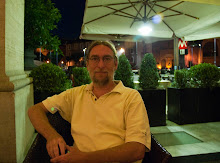
Saturday, July 24
Today is our third and final field trip where will be exploring sites along Hadrian’s Wall.
Our first stop is the fort at Segedunum. At the Eastern end of the wall it is thought of as the last fort (or, the first, depending on your point of view). Located in the modern city of Newcastle, it sits along the river, a considerable distance from where the river meets the sea. It was small; there was a much larger fort some distance to the west that regulated traffic along the road. Nothing remains today but a small outline of the foundations of the buildings. It has a huge observation tower, looming over the site four stories high. There is nothing to see, really, even the wall itself is obscured by trees and buildings – kind of boring.

Our next stop is the Roman town of Corbridge. The town sits above the river overlooking a valley. It was large by northern Britain standards and much of the lower level of walls has been rebuilt. What is most interesting is that the land has subsided in places and the walls huge the land, given it a rolling look. A great place for pictures.

In the little museum I find a small blue glass bead, just like the one I found earlier. It is much smaller than mine but the plate gives it a name – a melon bead. We have a quick lunch and then on to our next stop.
The fort and town of Vindolanda is probably the most impressive on the entire wall. It covers a huge area and work is still being done there today. We get a spirited tour of the existing dig by the co-director, who shows off some of their finds, including scraps of leather from which shoes were cut. He is positively jealous when he hears how many coins we have found.
The dig of the vicus is the largest in Britain and soon ours will be the second largest. However, what Vindolanda is most famous for is the 2000 odd writing tablets there were discovered 30 years ago. They are the only written Roman records ever found in Britain. They are famous for what we have learned about life on the wall as for what they don’t show us. The tablets are a record of daily life, long lists of things, letters home, requests, legal documents, etc. What they don’t include is a single word about the army actually fighting any battles – not one word about military activity. They have changed our understanding of what life was like along the frontier – fairly quiet.

We wander around for a long time; visit the museum, the gift shop (very popular) and everyone takes lots of pictures.
On our way to our last stop we pass by Housesteads, the other very large fort on the wall. I visited this one with my Mom on our 2000 tour of the U.K. The last stop is a miles castle on the wall. By now the weather is getting windy and cold.

The wall is one side of the castle and the land immediately to the north drops off precipitously. Even the cows don’t seem too happy here. We wander around for a while, taking pictures and being silly before gathering for a group photo. Back to the bus for the long ride back to Durham.
For dinner I convince a couple of friends to join me at the Indian restaurant across the street. Soon another group joins us.
After dinner, a big group is gearing up for a night on the town. As I have said, it seems a good idea to avoid the pubs on the weekends so a group of us sits in the kitchen of #1 and makes brownies. People come and go all night and we get to here everything that’s going on during the pub-crawl without having to actually go. Just when the brownies come out of the oven a large group arrives and the brownies disappear quickly. It has been a good night of talking without having to get involved with the bar crowd.
About the images:
1. The undulating walls of Corbridge.
2. A draining ditch at Corbridge.
3. I am going to buy this mansion, but only if I get a title of Baron along with it.
4. Vindolanda.
5. A mile castle along Hadrian's Wall.

No comments:
Post a Comment